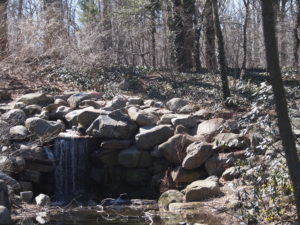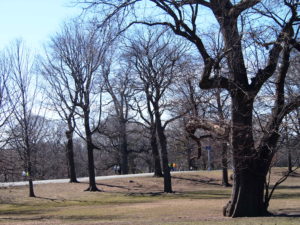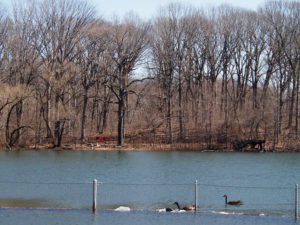During my spring break this semester I visited a friend in Brooklyn, NY. He lives in the neighborhood of Park Slope, which is one of the 6 neighborhoods that border Prospect Park. It was originally formed by the same designers of Central Park, and holds a lot of inspiration from ideas of romanticism and transcendentalism that were forming around its creation. It became a park for the community, and has a lot of man made structures within it to push people in the city out into nature.
For obvious reasons, this park is far different from my site in Burlington. One of the largest differences would be the fact that Prospect Park is an extremely landscaped and man made park, while my site is a small river and forest underneath a bridge in Burlington. However, you can see evidence of human impact/ development within them both, as well as natural water formations.
Due to its placement within the city, Prospect Park is a migration hot spot that on a peak day can see up to 110 different bird species. Among those species can be found 5 different species of vireo, Eastern Bluebird, numerous warblers (possibly 35 species yearly), Vesper Sparrow, White-crowned sparrow, Rose-breasted Grosbeak, Indigo Bunting, Bobolink, Orchard Oriole, and Baltimore Oriole.
The phenological conditions of the park were a bit difficult to identify, only because a large majority of the park is heavily groomed and maintained. However, in certain areas within the park it is completely closed off to the public to allow for regrowth. That area was looking pretty healthy, as much as it can at this time of year.

Waterfall pictured near dog park.

Trees spanning across field.

Dog park closed off for the winter.
https://www.google.com/maps/place/40%C2%B039’43.4%22N+73%C2%B058’16.7%22W/@40.66206,-73.9735017,17z/data=!3m1!4b1!4m5!3m4!1s0x0:0x0!8m2!3d40.66206!4d-73.971313?hl=en-US